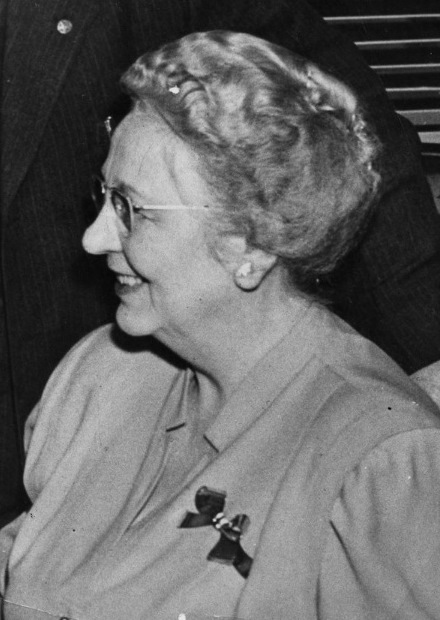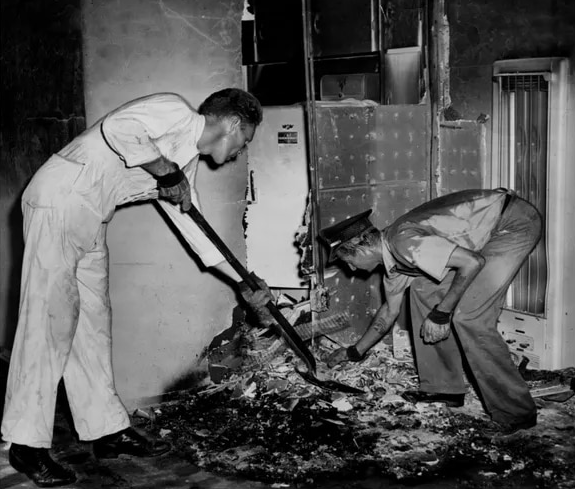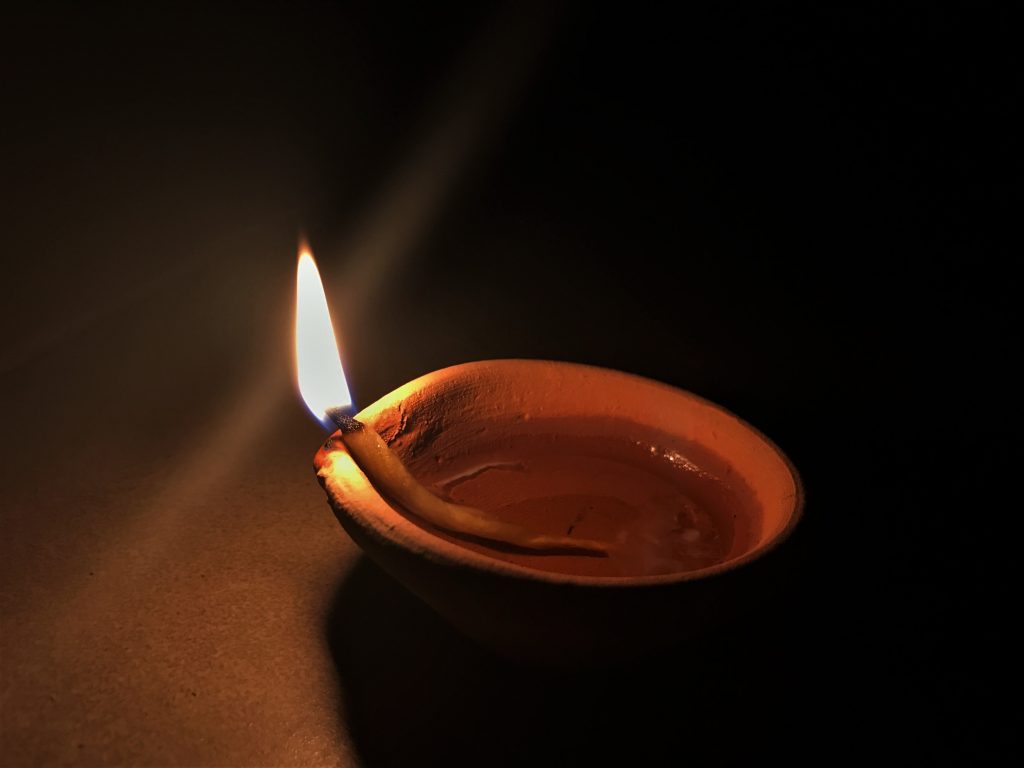Spontaneous human combustion, or, one’s bursting into flames with no external ignition source, is thought by scientists to be nothing but a myth. However, from as early as 1641, there have been supposed accounts of the phenomenon. Perhaps the most famous story regarding spontaneous human combustion is that of Mary Reeser. Today, we will take a look at her case and attempt to answer the question, “Did Mary Reeser really die of spontaneous human combustion?”
What Was Left of Mary Reeser?

Source: Wikipedia
In St. Petersburg, Florida, on the morning of July 2, 1951, landlord Pansy Carpenter received a telegram for one of her tenants, a 67 year-old widow named Mary Reeser. To ensure that Mary would promptly receive the message, Pansy knocked on her door at 8am. She heard nothing. This was strange, as Mary was almost always home. Pansy tried the door handle, which to her shock, was almost so hot that it burnt her fingers. She immediately called 911.
When firefighters arrived, they found something shocking. All that remained of Mary was a pile of ashes, her left foot, her backbone, and her skull, which, in a bizarre twist, had actually shrunk to the size of a tea cup. (When exposed to extreme heat, skulls expand, not shrink.)
The chair she had been sitting on was almost completely cremated as well. Her apartment had signs of smoke stains and some plastic items were slightly misshapen. Otherwise, the apartment bore no evidence of a fire.
What Was Mary Reeser Doing the Night Before?

On the night of July 1, 1951, Mary’s son visited her. She had been anxious due to an upcoming trip to her home state of Pennsylvania. Her son comforted her as she vented to him about her worries. As he was preparing to leave her apartment, he saw her ingest two sleeping pills. This detail is integral to the case.
A Possible Explanation for the Death of Mary Reeser

In addition to being a frequent consumer of sleeping pills, Mary was a heavy smoker. Based on these two details, investigators came up with a possible explanation for her bizarre death. In 1991, Mary’s daughter-in-law summed up the theory: after falling asleep on her chair, cigarette still in hand, the cigarette “dropped to her lap. The fat was the fuel that kept her burning. The floor was cement, and the chair was by itself. There was nothing around her to burn.”
Let’s examine this quote a bit. What Reeser’s daughter-in-law is referring to actually has a name, the wick effect. To better explain the wick effect, we’ll use Mary’s case as an example. The dropped cigarette lit her nightgown on fire. Heat then split her skin, exposing the nightgown to the fat inside her body. The fat was soaked up by the clothing, keeping the fire burning until she was completely incinerated: like wax and a candle.
Note: For more information on the wick effect, we suggest reading this Scientific American blog, which explains the science behind the phenomenon in greater detail.
Why Do People Still Think Mary Reeser Endured Spontaneous Human Combustion?
Raise your hand if you spent a large portion of childhood worried that you would suddenly burst into flames. https://t.co/Ur30dYshGm
— VICE (@VICE) July 25, 2021
If the wick effect did induce Mary Reeser’s death, then she clearly did not “spontaneously combust.” So why do so many people insist that she did? Well, an anthropologist named Wilton M. Krogman spread the theory. He was a University of Pennsylvania professor and considered experienced in fire research.
Krogman argued that the wick effect was not applicable to Mary’s case because of the fact that her skull did not expand. He also claimed that it would have taken several thousand degrees worth of heat for Mary to completely cremate Mary.
It is true that no one has yet explained how Mary’s skull shrunk. Still, we must interject that people are generally cremated at 1,400 to 1,600 degrees fahrenheit. This level of heat would have been consistent with the wick effect.
Other Supposed Cases of Spontaneous Human Combustion
As previously stated, recorded tales of spontaneous human combustion date all the way back to 1641. Below are just a few other alleged cases.
- In 1970, an 89 year-old woman named Margaret Hogan was found cremated in a fashion eerily similar to that of Mary Reeser.
- In 1980, a 73 year-old man named Henry Thomas was found burned to death in his home in Wales. All that remained of him was his skull (not shrunken) and the bottom halves of his legs.
- In 2010, Irishman Michael Faherty was given “spontaneous combustion” as an official cause of death.
We should note that of all others who supposedly died of spontaneous human combustion, Mary Reeser is the only one whose skull shrunk.
The Scientific Community’s Official Stance on Spontaneous Human Combustion

Despite the aforementioned cases, the scientific community is vehement in its insistence that spontaneous human combustion is not real. The Britannica article “Is Spontaneous Human Combustion Real?” states the following.
“Now for the important question: Is spontaneous human combustion real? Is the possibility of suddenly bursting into flames one more thing for us all to worry about?
“The answer is almost certainly no. None of the proposed scientific explanations for how a body would spontaneously burst into flames have held up to scrutiny. Some of the early proposed mechanisms rely on outdated medical ideas, such as the notion that an ignition could be the result of an imbalance of the bodily humors.”
With this in mind, Mary Reeser’s death is more likely to be a result of the wick effect. Still, we can’t forget the shrunken skull. It may never be fully explained.
What do you think? Do you believe that Mary’s death was the result of spontaneous human combustion? Is such a thing even real? Let us know in the comments!










